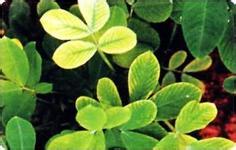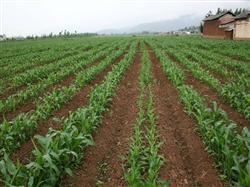Cultivation techniques of High Oil Corn

1. Characteristics and nutritional value of high-oil corn the outstanding characteristic of high-oil corn is that the grain oil content is high, which is more than 5% higher than the average oil content of ordinary corn. High-oil corn generally has higher protein, lysine and tryptophan. In addition, the life support An and vitamin E of high-oil corn are also higher than those of ordinary corn. 2. Breeding of high-oil corn in recent years, the breeding of domestic high-oil corn has entered a new stage of independent development, and a series of hybrid varieties with disease resistance and lodging resistance have been bred. 3. Commercial high-oil corn was produced by mixed cropping of common hybrids and high-oil corn, using high-oil corn as male parent and pollinating common corn, commercial high-oil corn could be obtained by pollen direct effect. The use of high-oil pollen to produce high-oil corn can not increase the oil content of ordinary corn kernels, and dry grains can not only increase the oil content of ordinary corn grains, but also avoid self-pollination, so as to increase grain weight and yield and make use of the characteristics of male sterility. Avoid the link of castration. When using common hybrids to produce high-oil corn, it is necessary to grasp several key points: (1) the florescence of common hybrids is the same as that of high-oil hybrids. If there is a great difference in flowering period, it should be sowed in the wrong time or other methods to make them similar. In order to ensure that ordinary hybrids can encounter pollen when the filaments are alive. (2) the proportion of common hybrids and high-oil hybrids is suitable, when the pollen ratio of high-oil hybrids is large, the proportion can be increased appropriately, otherwise it should be small to ensure sufficient pollen. (3) when using male fertile common corn hybrids to produce high oil corn, the male should be emasculated in time to ensure that the high oil pollen crosses with it. (4) when using male sterile common corn, if its florescence is the same as that of high oil corn, intercropping can be adopted when there is no need for wrong sowing, that is, common corn and high oil corn can be sown in different rows according to the predetermined proportion, or they can also be mixed to sow the two kinds of seeds together, and the mixed planting makes the two kinds of plants distribute more evenly in the field, so the pollination is better. However, when the florescence of sterile common corn is different from that of high oil corn, it is necessary to adjust the flowering period or to use fertile common corn to castrate. Intercropping is better to facilitate field operation.
- Prev

Symptoms and Control of Peanut net spot
1. The cause of iron deficiency in peanut peanut is one of the crops sensitive to iron. Although iron is not a component of chlorophyll, it is an indispensable condition for the synthesis of chlorophyll. It is a component of cytochrome oxidase and peroxidase related to respiration, and participates in the redox process in plants. Is.
- Next

Management measures of spring sowing corn
1. Take measures according to local conditions and select improved varieties. Popularize Yedan 13, Xiyu 3, Huayu 4, Zhongdan 32, Chenghai 1 and Expedition 808 in plain and hilly areas. Yedan 22, Yedan 51 and 9362 with short stem and short growth period are selected for interplanting in cotton fields. Zhongnuo 1 can be planted in suburban areas.
Related
- The first cup of black tea in spring, the flavor and history of tea gardens in Kenya, Africa
- The computer can not only choose potatoes, but also grow tea rice. AI will grow winter oolong tea champion.
- It is not only the inflated tea bitten by insects, but also engraved with the four seasons tea in Beipu.
- The Oriental Beauty Tea Festival in Zhuxian County takes the stage at the weekend to experience the plus-size feast of oil tea.
- & quot; Oriental Beauty Tea & Exploration of Emei in Hsinchu, the hometown of quot;
- The new variety of strawberry "Tainong 1" dessert is the first choice with mellow aroma. Crimson gorgeous
- History of Tea in Taiwan: from Wild Inner Mountain to Export Tea Garden
- Two types of Taiwan Oriental Beauty Black Tea won the British three-Star Award for Childhood Tea Xiang Zhang Jiaqi changed from pilot to champion tea maker.
- Banana species and varieties: the planting history of Taiwan Xianren banana and dwarf banana is long, is banana disease resistant?
- Coffee planting Technology: Qianjie Coffee from Seedling to harvesting

